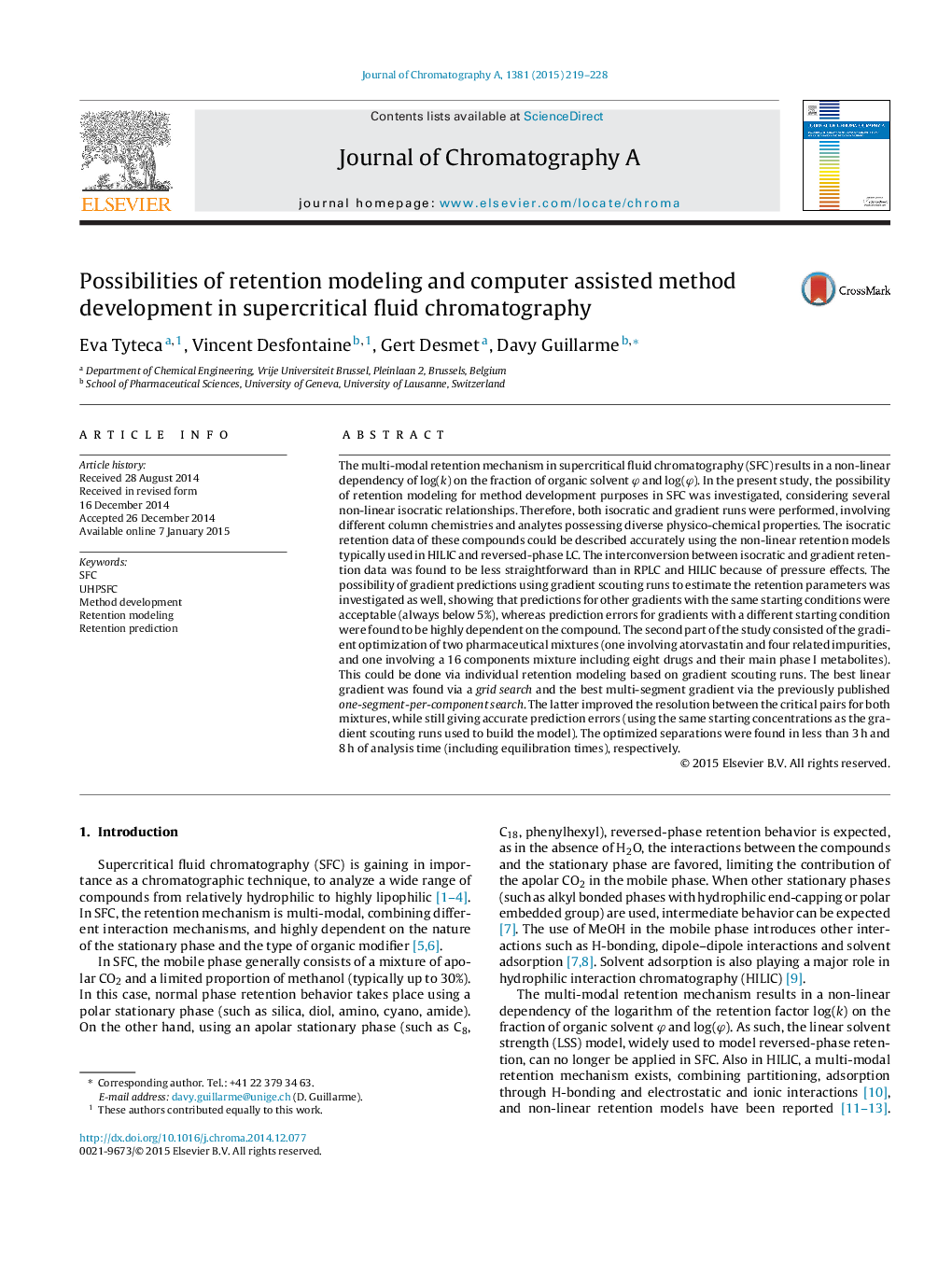| Article ID | Journal | Published Year | Pages | File Type |
|---|---|---|---|---|
| 7612066 | Journal of Chromatography A | 2015 | 10 Pages |
Abstract
The multi-modal retention mechanism in supercritical fluid chromatography (SFC) results in a non-linear dependency of log(k) on the fraction of organic solvent Ï and log(Ï). In the present study, the possibility of retention modeling for method development purposes in SFC was investigated, considering several non-linear isocratic relationships. Therefore, both isocratic and gradient runs were performed, involving different column chemistries and analytes possessing diverse physico-chemical properties. The isocratic retention data of these compounds could be described accurately using the non-linear retention models typically used in HILIC and reversed-phase LC. The interconversion between isocratic and gradient retention data was found to be less straightforward than in RPLC and HILIC because of pressure effects. The possibility of gradient predictions using gradient scouting runs to estimate the retention parameters was investigated as well, showing that predictions for other gradients with the same starting conditions were acceptable (always below 5%), whereas prediction errors for gradients with a different starting condition were found to be highly dependent on the compound. The second part of the study consisted of the gradient optimization of two pharmaceutical mixtures (one involving atorvastatin and four related impurities, and one involving a 16 components mixture including eight drugs and their main phase I metabolites). This could be done via individual retention modeling based on gradient scouting runs. The best linear gradient was found via a grid search and the best multi-segment gradient via the previously published one-segment-per-component search. The latter improved the resolution between the critical pairs for both mixtures, while still giving accurate prediction errors (using the same starting concentrations as the gradient scouting runs used to build the model). The optimized separations were found in less than 3Â h and 8Â h of analysis time (including equilibration times), respectively.
Related Topics
Physical Sciences and Engineering
Chemistry
Analytical Chemistry
Authors
Eva Tyteca, Vincent Desfontaine, Gert Desmet, Davy Guillarme,
